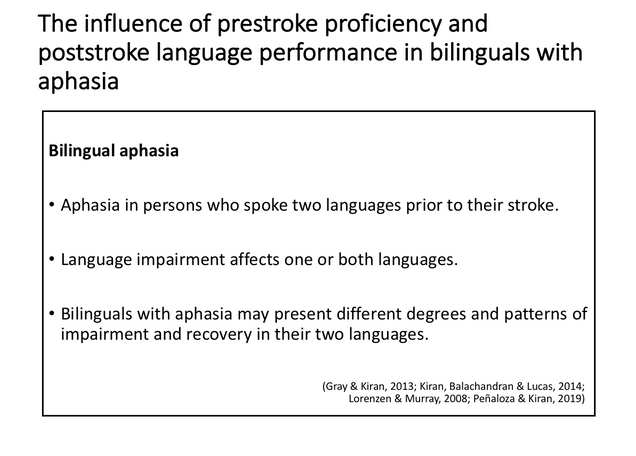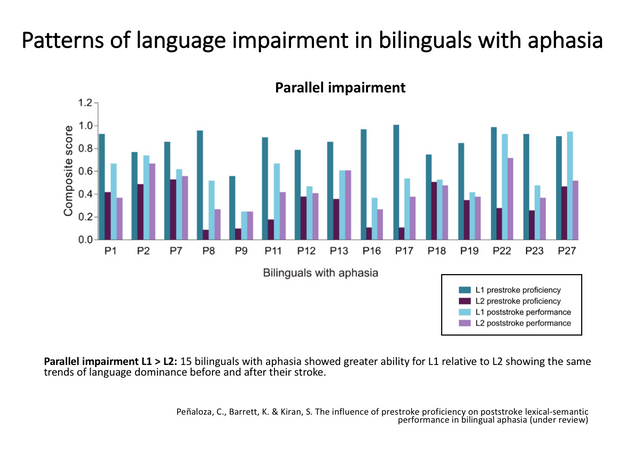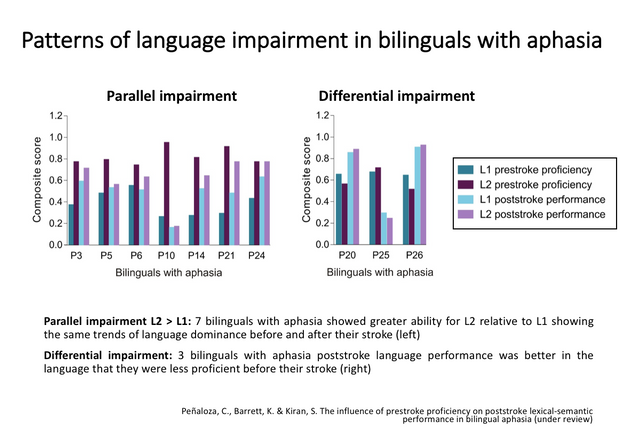The influence of Prestroke Proficiency on Poststroke Lexical-Semantic Performance in Bilingual Aphasia
The influence of Prestroke Proficiency on Poststroke Lexical-Semantic Performance in Bilingual Aphasia
Bilinguals with aphasia may present different degrees and patterns of impairment in their two languages. Language proficiency is one of the most relevant prestroke factors that modulates poststroke language impairment in bilinguals with aphasia (Gray & Kiran, 2013; Kiran, Balachandran & Lucas, 2014; Peñaloza & Kiran, 2019). This study aimed to:
- Identify the relevant aspects of the language learning history of bilinguals that contribute to their L1 and L2 proficiency.
- Examine the relationships between prestroke proficiency and poststroke lexical-semantic performance.
- Determine common patterns of language impairment in bilingual speakers with aphasia.
Twenty seven Spanish-English bilinguals with aphasia completed a language use questionnaire (LUQ, Kastenbaum et al., 2018) that conveyed information about their bilingual language history, and lexical-semantic tests conducted in each language. Our main findings revealed that:
- L1 prestroke proficiency was determined by daily use, educational history, lifetime exposure, and language ability rating, whereas L2 prestroke proficiency was determined by age of acquisition, daily use, educational history, lifetime exposure, lifetime confidence, family proficiency, and language ability rating.
- Prestroke proficiency significantly predicted poststroke lexical-semantic performance in both languages.
- Parallel impairment was present in the majority of the bilingual participants with aphasia while differential impairment was observed in only three participants. Overall, these findings confirm prestroke language proficiency as a key predictor of poststroke language impairment in bilinguals with aphasia.




